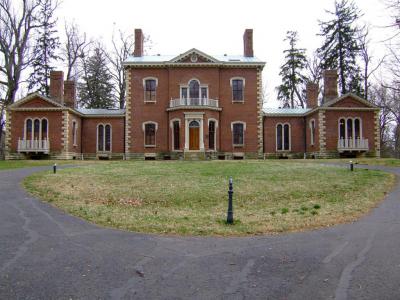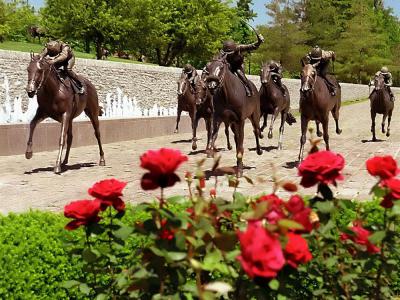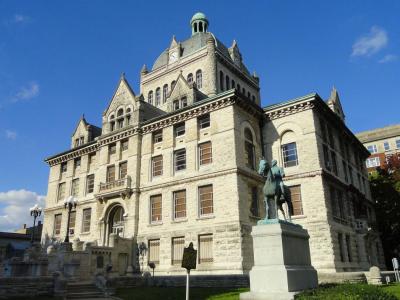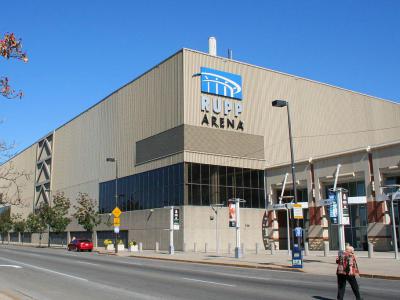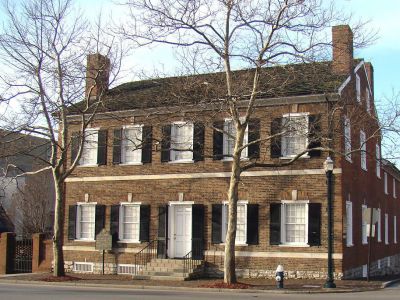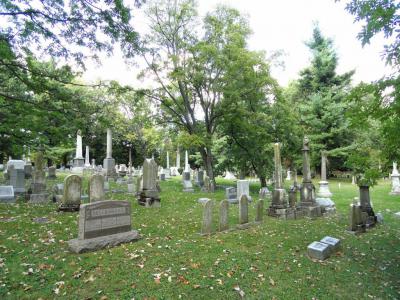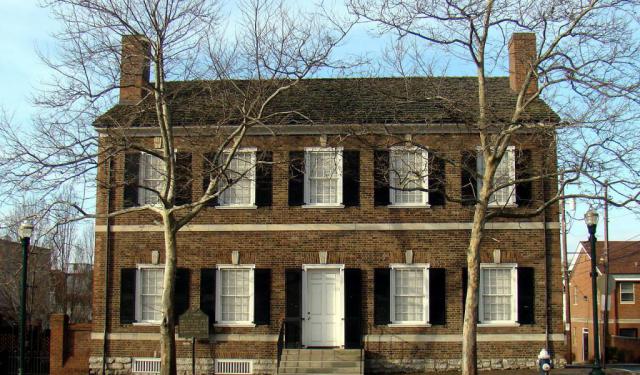Lexington Introduction Walking Tour (Self Guided), Lexington
Lexington is Kentucky's second-largest city and the Fayette County seat. The city is most famous for the Thoroughbred racing industry but has so much to offer besides attractions related to racing. This city dates back to 1782 when Kentucky was still part of the Commonwealth of Virginia and was settled by frontiersmen under the leadership of William McConnell.
During the 19th century, the town grew into a busy city with hemp and tobacco farming, as well as horse breeding, making up a substantial part of the economy. In 1850, First African Baptist Church had the distinction of being the state's largest church. The city saw growth through the late 19th and early 20th centuries.
Some impressive firsts that this city has also seen include one of the first drug rehabilitation clinics, started in 1935. During the 1930s and 1940s, the city served as headquarters for the packhorse library. Lexington has seen major growth since the late 50s, with several of the country's largest corporations headquartered in the city.
Popular historical things to see include Ashland, Henry Clay's estate, and the Mary Todd Lincoln House. Exciting outdoor attractions include Thoroughbred Park, which celebrates the horseracing world's contributions, and the Lexington Cemetery, which has been a noteworthy final resting place since 1849.
This this self-guided walking tour to visit the most notable attractions in Lexington.
During the 19th century, the town grew into a busy city with hemp and tobacco farming, as well as horse breeding, making up a substantial part of the economy. In 1850, First African Baptist Church had the distinction of being the state's largest church. The city saw growth through the late 19th and early 20th centuries.
Some impressive firsts that this city has also seen include one of the first drug rehabilitation clinics, started in 1935. During the 1930s and 1940s, the city served as headquarters for the packhorse library. Lexington has seen major growth since the late 50s, with several of the country's largest corporations headquartered in the city.
Popular historical things to see include Ashland, Henry Clay's estate, and the Mary Todd Lincoln House. Exciting outdoor attractions include Thoroughbred Park, which celebrates the horseracing world's contributions, and the Lexington Cemetery, which has been a noteworthy final resting place since 1849.
This this self-guided walking tour to visit the most notable attractions in Lexington.
How it works: Download the app "GPSmyCity: Walks in 1K+ Cities" from Apple App Store or Google Play Store to your mobile phone or tablet. The app turns your mobile device into a personal tour guide and its built-in GPS navigation functions guide you from one tour stop to next. The app works offline, so no data plan is needed when traveling abroad.
Lexington Introduction Walking Tour Map
Guide Name: Lexington Introduction Walking Tour
Guide Location: USA » Lexington (See other walking tours in Lexington)
Guide Type: Self-guided Walking Tour (Sightseeing)
# of Attractions: 6
Tour Duration: 2 Hour(s)
Travel Distance: 4.3 Km or 2.7 Miles
Author: DanaOffice
Sight(s) Featured in This Guide:
Guide Location: USA » Lexington (See other walking tours in Lexington)
Guide Type: Self-guided Walking Tour (Sightseeing)
# of Attractions: 6
Tour Duration: 2 Hour(s)
Travel Distance: 4.3 Km or 2.7 Miles
Author: DanaOffice
Sight(s) Featured in This Guide:
- Ashland (Henry Clay Estate)
- Thoroughbred Park
- Lexington History Museum
- Rupp Arena
- Mary Todd Lincoln House
- Lexington Cemetery
1) Ashland (Henry Clay Estate) (must see)
Ashland, in Lexington, enjoys a unique status as being the Henry Clay Estate. Henry Clay (1777 – 1852) was an American attorney and statesman who represented Kentucky in both the Senate and House. He was the seventh House Speaker and the ninth Secretary of State.
The farmer, attorney, Congressman and Senator has an enduring legacy that has helped shape the early life of this country. The grounds of Henry Clay Estate has been beautifully preserved, and the house still has many of the original furnishings on display. It is a registered National Historic Landmark.
The estate hosts regular tours that cover unique themes related to different aspects of life on the property. Some of the special themed tours include an indoor tour, slavery, women's contributions, and tours that include art and the grounds. Self-guided tours of outdoor areas, including the gardens and walking trails, are available.
All of the artifacts on display at the estate are part of a preservation and conservation program to ensure that they are available for future generations. In addition to furnishings, the home is also host to a collection of silver, textile items, and books. All of these items provide fascinating looks into the life of this statesman and his family.
The art collection includes materials ranging from steel to wattle for a broader range of representations. There are three large-scale steel sculptures by John Henry, a wooden horse head by Kiptoo Tarus, and wattle and daub sculptures by Justin Roberts. All of the art used at the estate helps tell its story in practical ways. These sculptures are all visible on the grounds and worthy of your time.
Why You Should Visit:
An excellent, insightful look at the many aspects of Henry Clay's life, told through art and other exhibits that tell a story.
Tips:
Consider a tour that covers the art and grounds for the best look at the estate's history.
The farmer, attorney, Congressman and Senator has an enduring legacy that has helped shape the early life of this country. The grounds of Henry Clay Estate has been beautifully preserved, and the house still has many of the original furnishings on display. It is a registered National Historic Landmark.
The estate hosts regular tours that cover unique themes related to different aspects of life on the property. Some of the special themed tours include an indoor tour, slavery, women's contributions, and tours that include art and the grounds. Self-guided tours of outdoor areas, including the gardens and walking trails, are available.
All of the artifacts on display at the estate are part of a preservation and conservation program to ensure that they are available for future generations. In addition to furnishings, the home is also host to a collection of silver, textile items, and books. All of these items provide fascinating looks into the life of this statesman and his family.
The art collection includes materials ranging from steel to wattle for a broader range of representations. There are three large-scale steel sculptures by John Henry, a wooden horse head by Kiptoo Tarus, and wattle and daub sculptures by Justin Roberts. All of the art used at the estate helps tell its story in practical ways. These sculptures are all visible on the grounds and worthy of your time.
Why You Should Visit:
An excellent, insightful look at the many aspects of Henry Clay's life, told through art and other exhibits that tell a story.
Tips:
Consider a tour that covers the art and grounds for the best look at the estate's history.
2) Thoroughbred Park (must see)
Thoroughbred Park is one of the best examples of the role that Thoroughbred racing plays in Lexington's life. A part of the city's park system, this popular location spans 2.75 acres, with distinct sections dedicated to different aspects of horse racing. Twelve bronze statues, fountains, and landscaped areas help bring attention to local racing history, along with forty-four plaques that honor the people most involved with racing.
A multi-level area featuring trees, a stone wall, and seating help provide a nice place to relax. Seven of the statues feature life-size horses and jockeys in bronze, featuring the likenesses of famous figures such as Pay Day and Jerry Bailey.
The Winner's Circle part of the park has a reflection pool that also features water jets for greater contrast. There is also a granite plaza near the pool, helping to create an area that is a visual treat to enjoy.
A multi-level area featuring trees, a stone wall, and seating help provide a nice place to relax. Seven of the statues feature life-size horses and jockeys in bronze, featuring the likenesses of famous figures such as Pay Day and Jerry Bailey.
The Winner's Circle part of the park has a reflection pool that also features water jets for greater contrast. There is also a granite plaza near the pool, helping to create an area that is a visual treat to enjoy.
3) Lexington History Museum
The Lexington History Museum offers a blended approach in how it presents local history. Initially housed in a former courthouse that closed for renovations, the museum enjoys a blend of gallery space in The Square on Main Street's third floor. The museum helps tell the city's story through a mixture of its gallery and the so-called pocket museums that appear around Downtown.
This museum's gallery has exhibits that change at each LexArts Gallery Hop event. Unique photography technology allows the museum to display 10,000 square feet worth of photos in a 1,000 square feet space. Pocket museum collections include exhibits that fit inside boxes.
There are also many artifacts related to area history that include ten 19th century lamp posts from the viaduct on Harrison Street, an ax from the 1770s, and a copper weather vane from 1899. Additional artifacts that relate to the local history include typewriters that IBM once made in Lexington and memorabilia from the famous Golden Horseshoe restaurant from the 1940s and 1950s.
This museum's gallery has exhibits that change at each LexArts Gallery Hop event. Unique photography technology allows the museum to display 10,000 square feet worth of photos in a 1,000 square feet space. Pocket museum collections include exhibits that fit inside boxes.
There are also many artifacts related to area history that include ten 19th century lamp posts from the viaduct on Harrison Street, an ax from the 1770s, and a copper weather vane from 1899. Additional artifacts that relate to the local history include typewriters that IBM once made in Lexington and memorabilia from the famous Golden Horseshoe restaurant from the 1940s and 1950s.
4) Rupp Arena (must see)
Rupp Arena dates back to 1971 and is best-known today for hosting University of Kentucky sports, including men's basketball. Over the years, this arena has also become a popular large-scale entertainment venue. At the time this venue opened in 1976, it was the largest complex of its type in the U.S.
One of the things that stand out for visitors is the arena's impressive size. After dark, the arena has an impressive light display that helps visitors find it easily. You will be able to appreciate the place that the arena holds in the city's history.
Today, the arena has a maximum capacity of over 20,000 which makes the location adaptable for sporting events, live shows, and conventions. Recent renovations have included new seating areas, as well as video boards. The concession area has plenty of food and beverage options to enjoy, as well as a pool hall.
One of the things that stand out for visitors is the arena's impressive size. After dark, the arena has an impressive light display that helps visitors find it easily. You will be able to appreciate the place that the arena holds in the city's history.
Today, the arena has a maximum capacity of over 20,000 which makes the location adaptable for sporting events, live shows, and conventions. Recent renovations have included new seating areas, as well as video boards. The concession area has plenty of food and beverage options to enjoy, as well as a pool hall.
5) Mary Todd Lincoln House (must see)
The Mary Todd Lincoln House was the childhood home of Mary Ann Todd, born here in 1818 and later the wife of President Abraham Lincoln. Built between 1803 and 1806 in the Georgian/Federal style, the house originally served as an inn before being acquired by Mary’s father, Robert Smith Todd, in 1832. The Todds resided here until 1839, when Mary moved to Illinois, but Mary and President Lincoln returned in 1847 for a family visit.
Today, the fourteen-room brick structure is preserved as a museum and stands as the first historic site in America dedicated to a First Lady. Thanks to a major restoration spearheaded in the 1970s by the Kentucky Mansions Preservation Foundation under Beula C. Nunn, the home reopened to the public in 1977. Its carefully curated interiors house original Todd and Lincoln family furnishings, period portraits, and artifacts that vividly reflect early 19th-century life and Mary’s upbringing.
Visitors can explore the home via 30-minute self-guided tours or a one-hour guided experience (reservations recommended for the latter). The museum is partially wheelchair‑accessible, featuring a lift to the first floor and a photo album for glimpses of the upstairs areas. After the tour, guests can enjoy the shop, the charming Beula C. Nunn garden, and a self-guided walking tour of Lexington, including sites linked to Mary and Abraham’s time in the city.
More than just a house, this site explores the intersection of Northern and Southern identities before, during, and after the Civil War. Mary Lincoln grew up in a well‑to‑do, slaveholding family, yet her life was later shaped by abolitionist influence and personal tragedy. As you wander through the parlors, bedrooms, and collection of china and portraits, you’ll gain an intimate understanding of the woman who became a sophisticated and politically engaged First Lady-and who endured controversy, loss, and resilience amidst a divided nation.
Today, the fourteen-room brick structure is preserved as a museum and stands as the first historic site in America dedicated to a First Lady. Thanks to a major restoration spearheaded in the 1970s by the Kentucky Mansions Preservation Foundation under Beula C. Nunn, the home reopened to the public in 1977. Its carefully curated interiors house original Todd and Lincoln family furnishings, period portraits, and artifacts that vividly reflect early 19th-century life and Mary’s upbringing.
Visitors can explore the home via 30-minute self-guided tours or a one-hour guided experience (reservations recommended for the latter). The museum is partially wheelchair‑accessible, featuring a lift to the first floor and a photo album for glimpses of the upstairs areas. After the tour, guests can enjoy the shop, the charming Beula C. Nunn garden, and a self-guided walking tour of Lexington, including sites linked to Mary and Abraham’s time in the city.
More than just a house, this site explores the intersection of Northern and Southern identities before, during, and after the Civil War. Mary Lincoln grew up in a well‑to‑do, slaveholding family, yet her life was later shaped by abolitionist influence and personal tragedy. As you wander through the parlors, bedrooms, and collection of china and portraits, you’ll gain an intimate understanding of the woman who became a sophisticated and politically engaged First Lady-and who endured controversy, loss, and resilience amidst a divided nation.
6) Lexington Cemetery (must see)
Lexington Cemetery, founded in 1849, stands as a beautifully designed 170-acre rural “garden cemetery” on the north edge of downtown Lexington. Its creation addressed growing concerns about overcrowded burial grounds and public health as the city rapidly expanded in the 19th century. Conceived by prominent local figures and laid out by Superintendent Charles S. Bell and landscape designer John Lutz, the grounds opened in mid-1849 with its first interment later that year.
Today, visitors step into a serene arboretum hosting over 200 tree species-including dogwoods, magnolias, crabapples, and weeping cherries-as well as vibrant fields of 16,000 tulips bursting into bloom each spring. The paths wind past picturesque ponds, historic mausoleums, and notable graves, including Kentucky icons such as Henry Clay, Vice President John C. Breckinridge, Civil War generals, and sports legend Adolph Rupp. Many structures and monuments on the grounds are listed on the National Register of Historic Places, notably the Gothic-style Henry Clay Monument (1976) and four distinct Civil War markers.
This cemetery is more than a silent resting place-it’s a living historical landscape. Self-guided and guided walking tours span about 1.5 miles and spotlight the site’s horticultural beauty, architectural design, and layered stories of the Civil War era. Special themed walks, such as those exploring the Civil War legacy and the Todd-Lincoln family, bring these narratives to life.
Lexington Cemetery offers a peaceful retreat into history and natural beauty. Grounds are open daily, free to the public, and well-maintained year-round. Whether you're in search of history, horticulture, or simply quieter moments, this historic cemetery is a must-visit landmark that reveals the rich heritage of Lexington through its landscape and legacy.
Today, visitors step into a serene arboretum hosting over 200 tree species-including dogwoods, magnolias, crabapples, and weeping cherries-as well as vibrant fields of 16,000 tulips bursting into bloom each spring. The paths wind past picturesque ponds, historic mausoleums, and notable graves, including Kentucky icons such as Henry Clay, Vice President John C. Breckinridge, Civil War generals, and sports legend Adolph Rupp. Many structures and monuments on the grounds are listed on the National Register of Historic Places, notably the Gothic-style Henry Clay Monument (1976) and four distinct Civil War markers.
This cemetery is more than a silent resting place-it’s a living historical landscape. Self-guided and guided walking tours span about 1.5 miles and spotlight the site’s horticultural beauty, architectural design, and layered stories of the Civil War era. Special themed walks, such as those exploring the Civil War legacy and the Todd-Lincoln family, bring these narratives to life.
Lexington Cemetery offers a peaceful retreat into history and natural beauty. Grounds are open daily, free to the public, and well-maintained year-round. Whether you're in search of history, horticulture, or simply quieter moments, this historic cemetery is a must-visit landmark that reveals the rich heritage of Lexington through its landscape and legacy.
Walking Tours in Lexington, Kentucky
Create Your Own Walk in Lexington
Creating your own self-guided walk in Lexington is easy and fun. Choose the city attractions that you want to see and a walk route map will be created just for you. You can even set your hotel as the start point of the walk.
Historical Buildings
Historical buildings in Lexington, Kentucky, serve as time capsules, reflecting the architectural and cultural history of the region. A good number of these structures are listed in the National Register of Historic Places, each having its own story to tell. Let's explore a few notable structures that have made significant architectural contributions to the cityscape of Lexington.
The... view more
Tour Duration: 1 Hour(s)
Travel Distance: 2.4 Km or 1.5 Miles
The... view more
Tour Duration: 1 Hour(s)
Travel Distance: 2.4 Km or 1.5 Miles
The Most Popular Cities
/ view all



